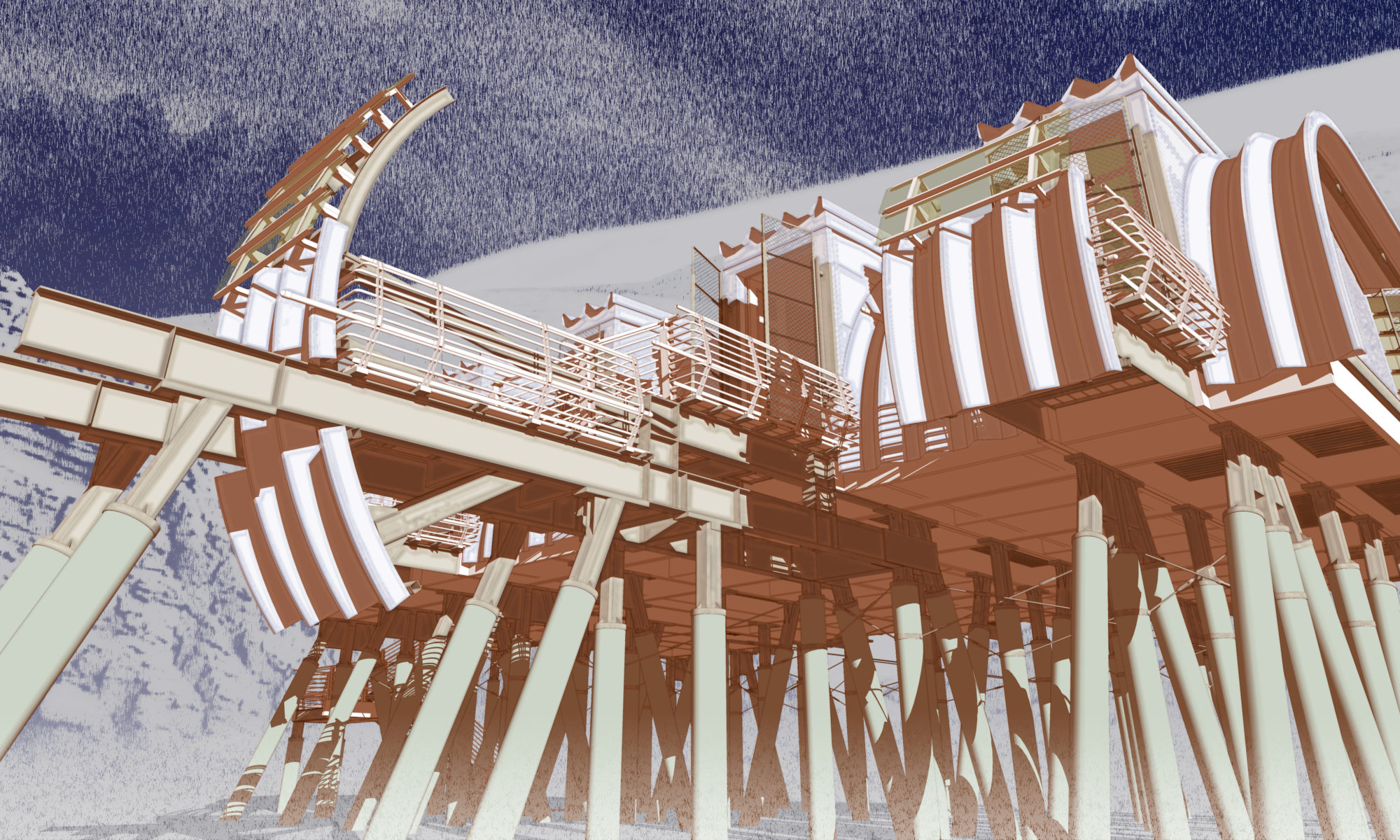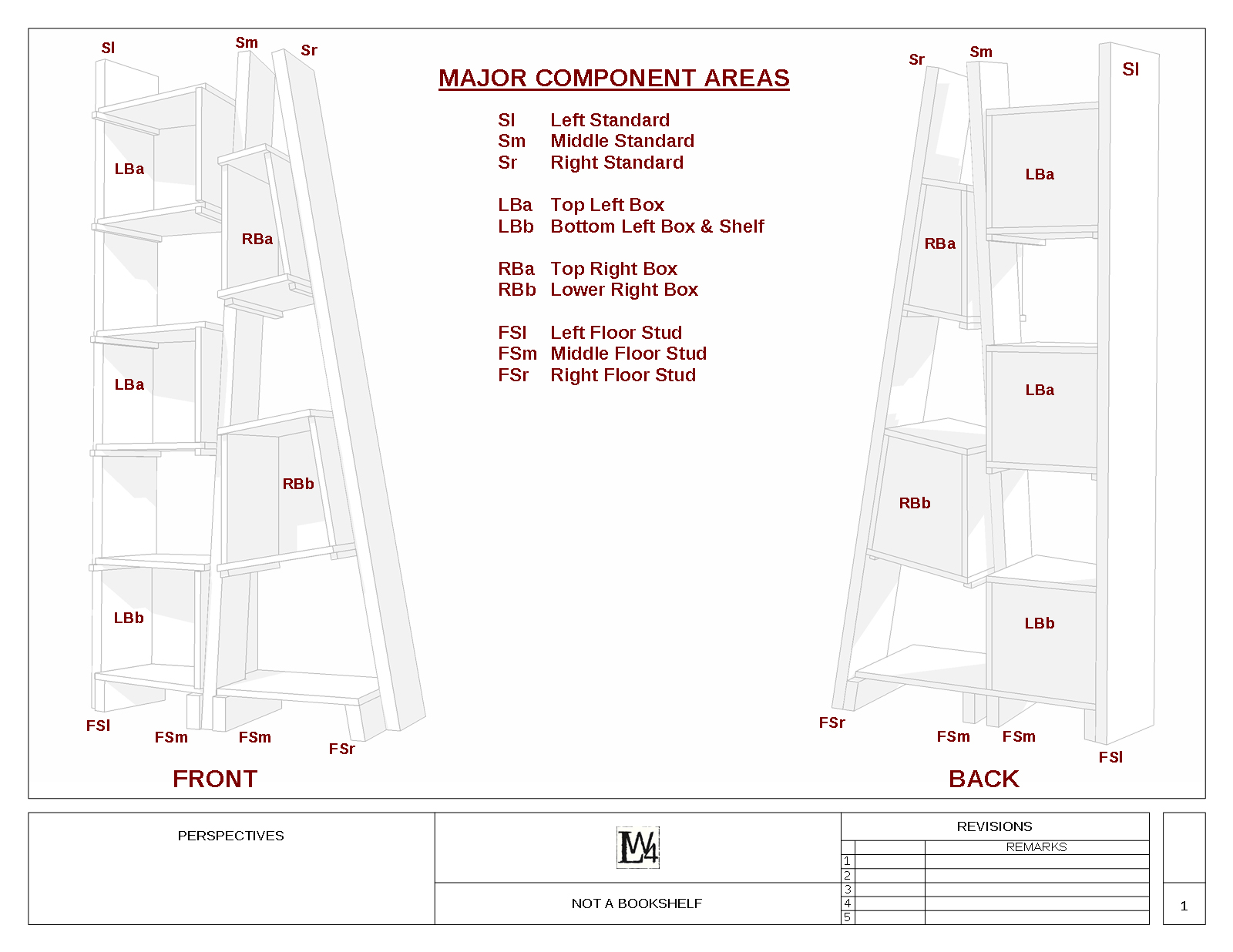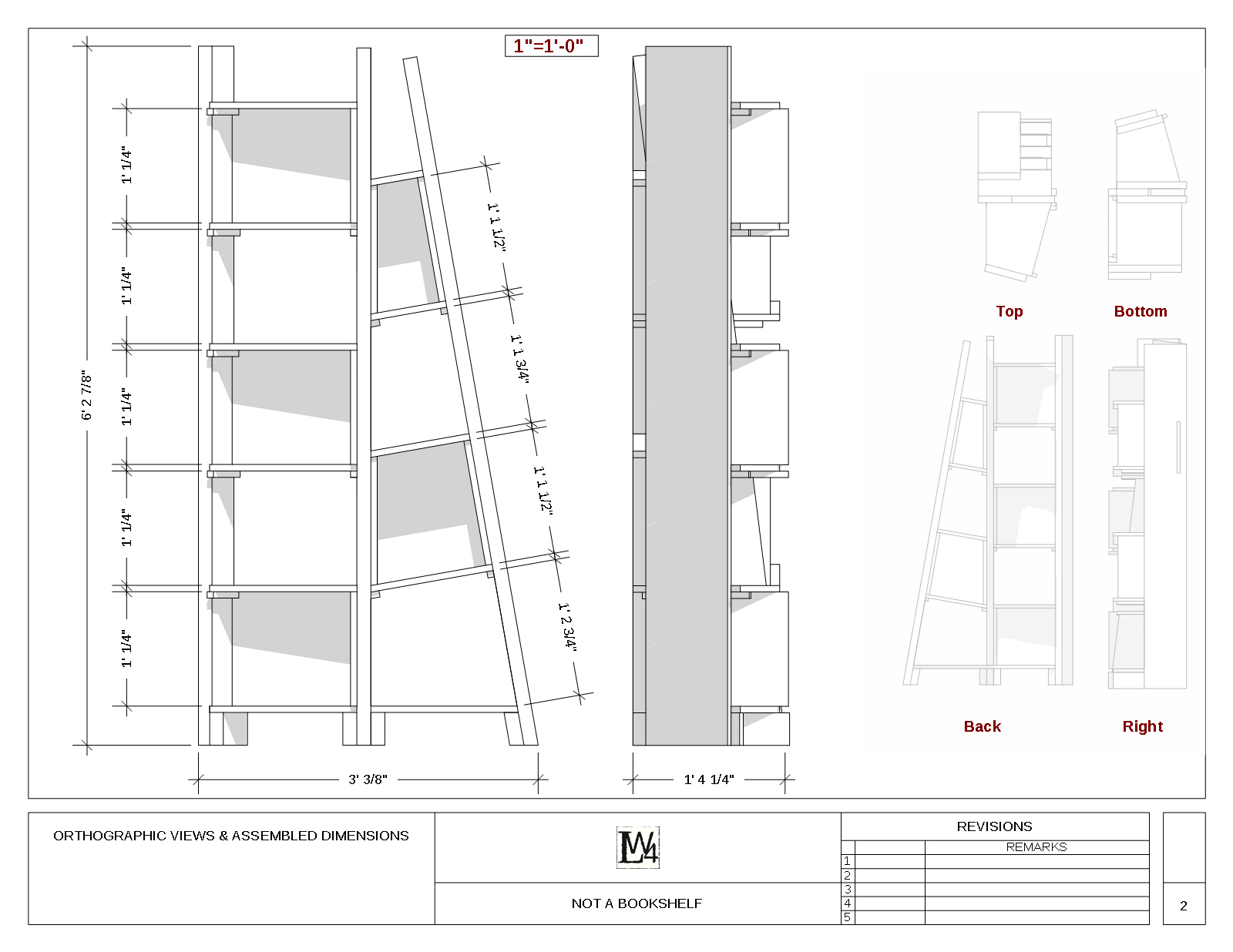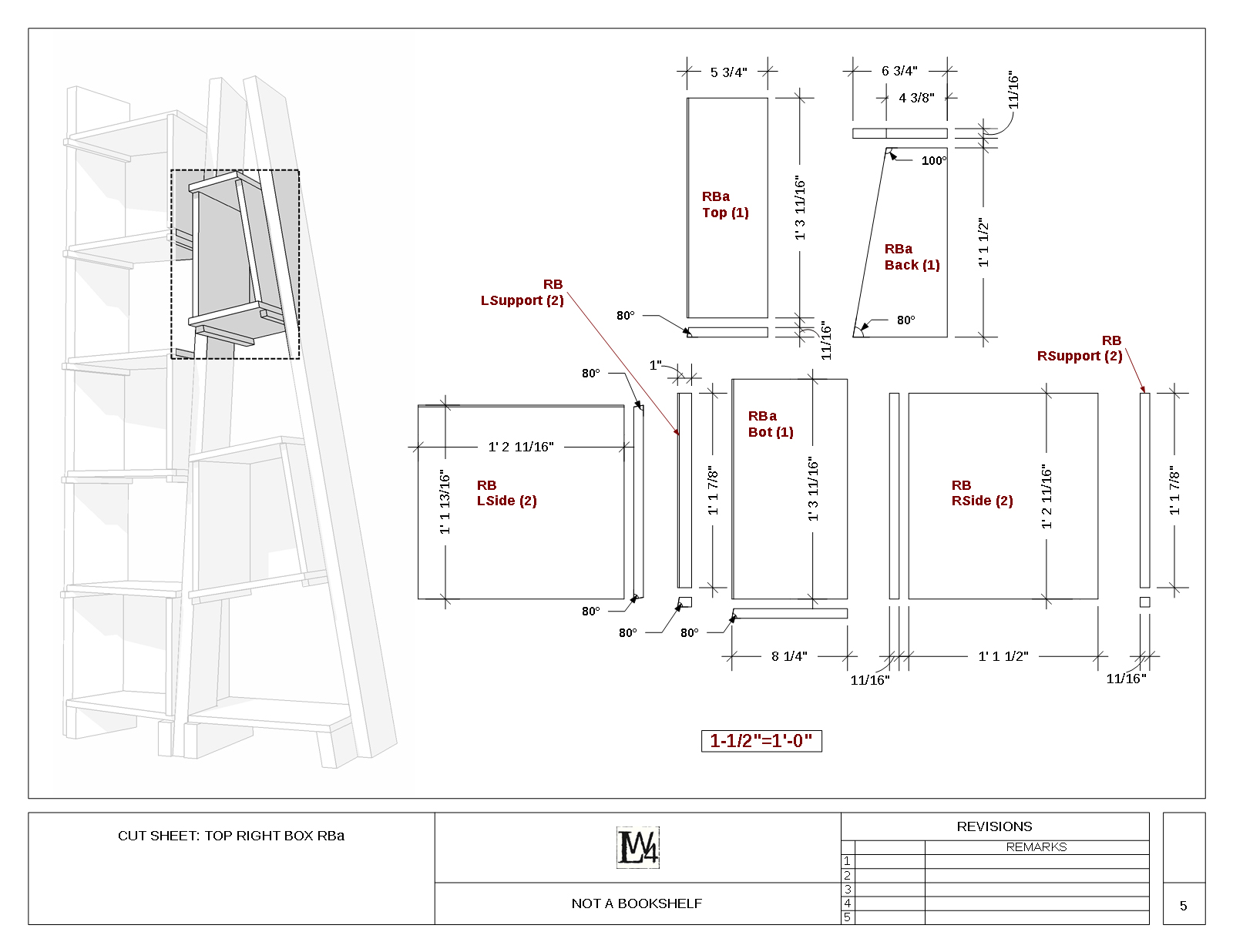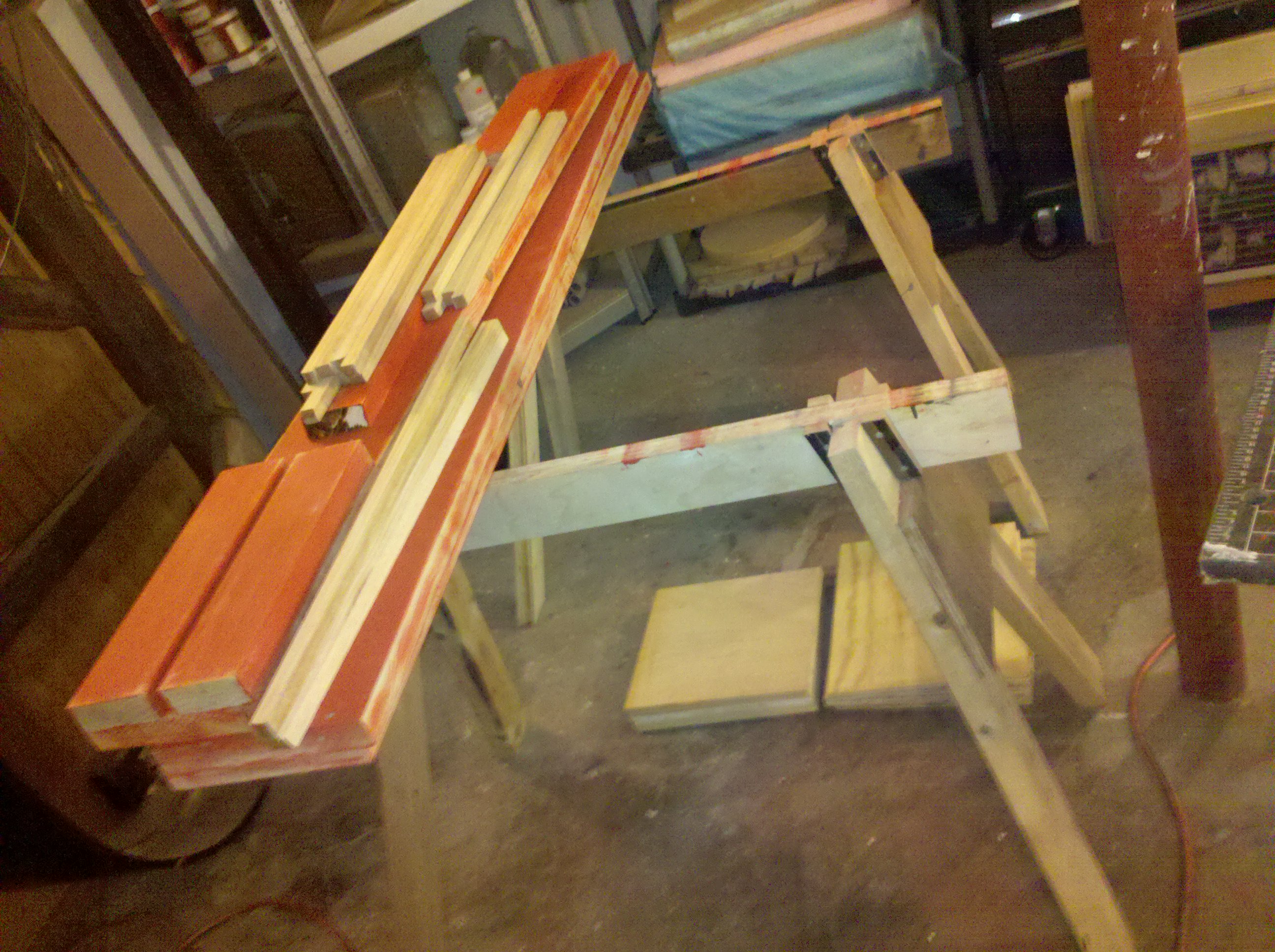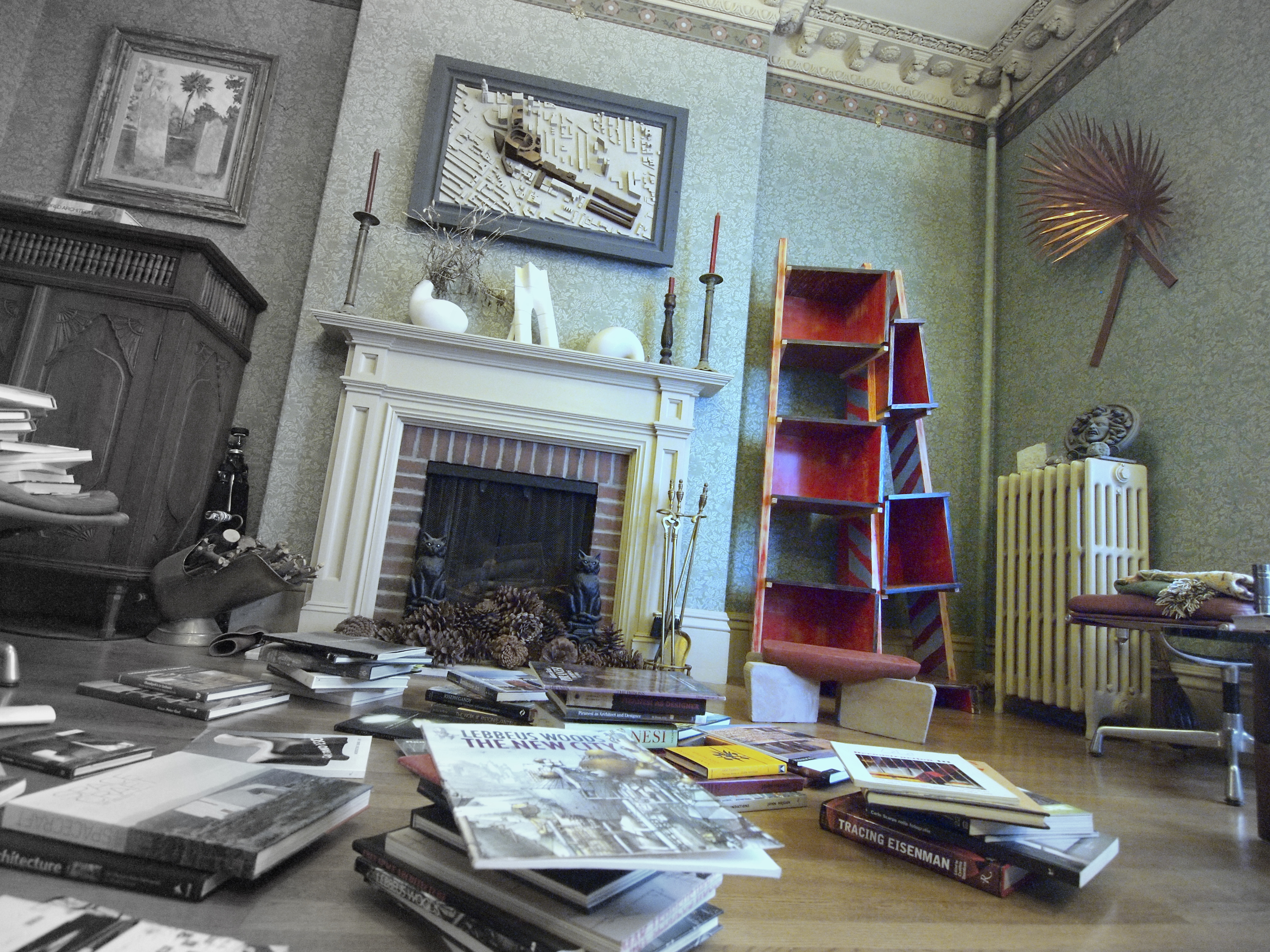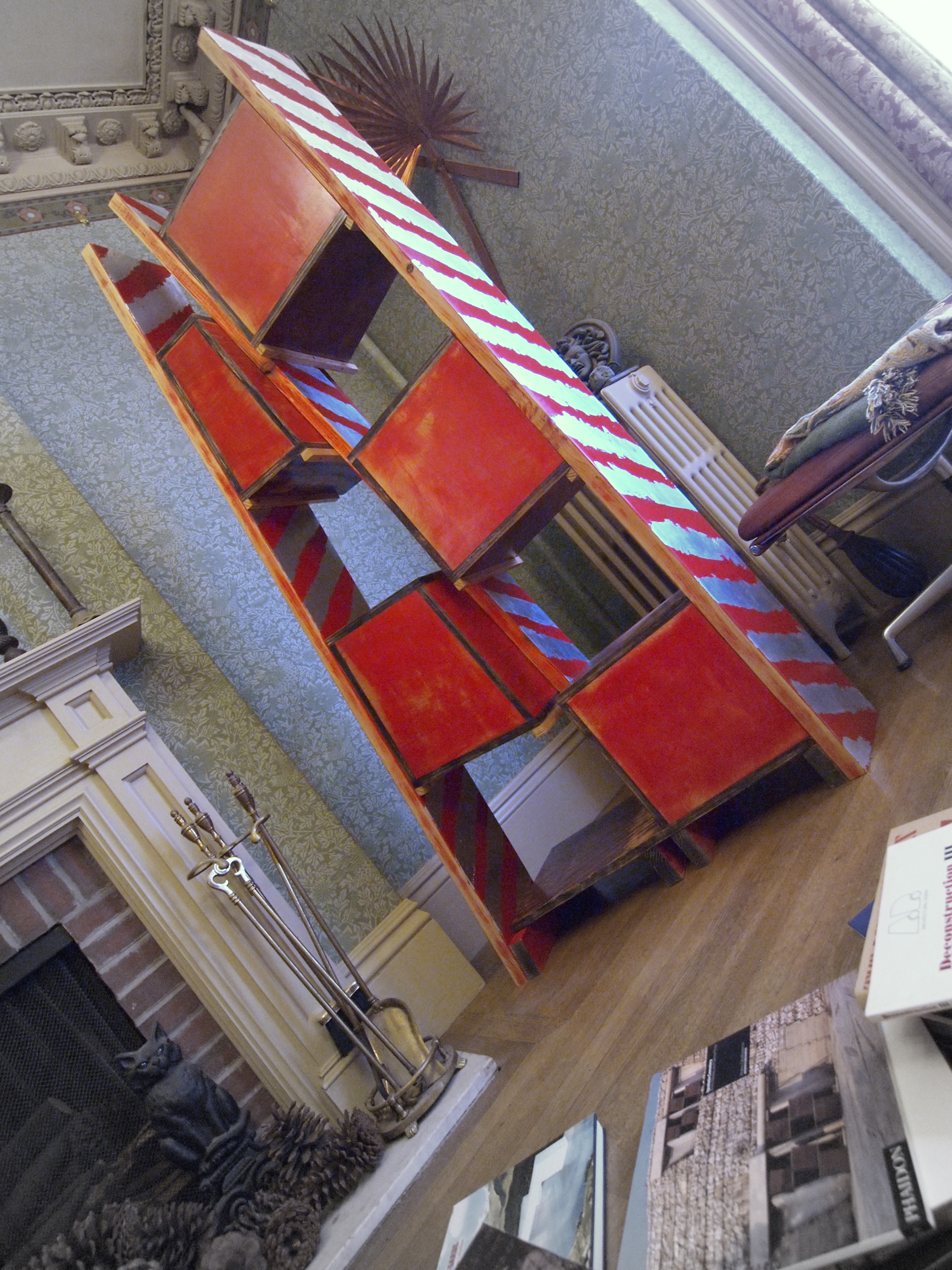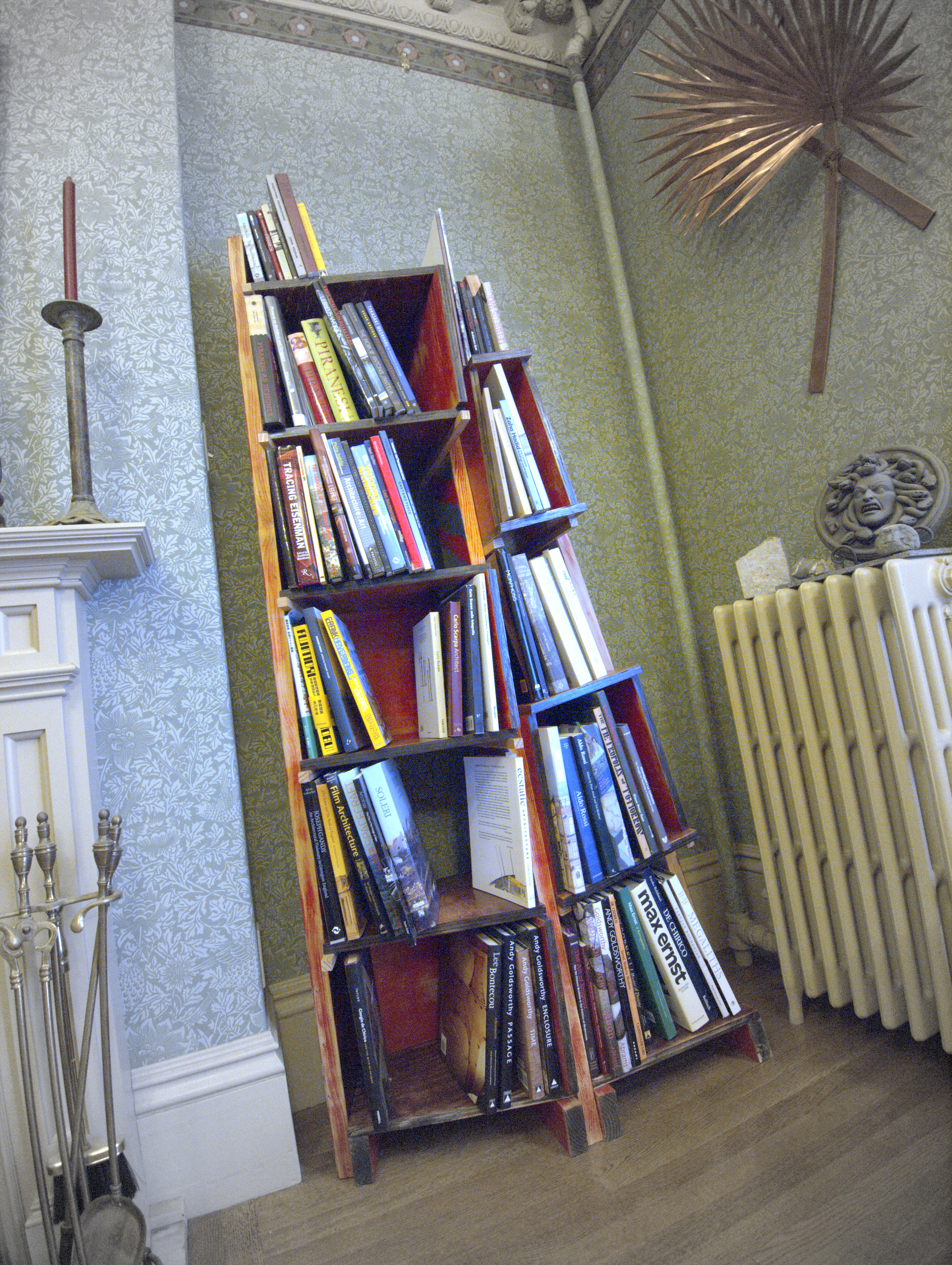Although originally something of a whimsical experiment on my part (a realistic rendering of a computer model of a bookshelf made of construction debris), this little project seems to have received more attention from the world of non-architects than any previous work of mine. Magritte would no doubt be pleased that so many people recognized the reference.
With some difficulty, I resolved the original computer model into dimensioned construction drawings, and then I used these to resolve the construction debris in turn into something very much like the depicted piece of furniture.
ADDENDUM:
To my great surprise, author Karl Aspelund selected one of the original renderings of this not-a-bookshelf bookshelf project for his textbook Designing: An Introduction (published in 2015 by Fairchild Books, a division of Bloomsbury Publications). According to the publisher,
The textbook is a core text examining the multi-faceted world of professional design. Students will gain an understanding of the nature of the design through its history from the mid-19th century to today’s multicultural global marketplace, and learn to recognize its elements and principles in colorfully illustrated chapters. The design process is explored in practical terms of conceptualizing, researching assembling, and presenting and then examined in the context of 2-d, 3-D and virtual environments, emphasizing user experience and the constraints and needs of client-defined creativity. Covering all topics common to foundation studies and recognizing that all designers benefit from shared vocabulary, it will provide students with the tools to create designs that are both visually compelling and conceptually inventive.
This is the description appended to illustration:
Even that which is “deconstructed” often has as much a sense of being “a gestalt” as any design. This bookshelf, an exercise in the reuse of salvaged construction materials has as “totality” of its own.
